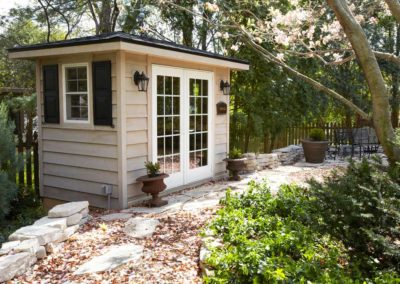If you’re in the dark about how to approach the task of choosing stylish and adequate lighting for your kitchen, here is a crash course in fundamental principles. The right kitchen lighting will not only light up your space but will make working in your kitchen more comfortable and more enjoyable. There are a few general lighting rules to follow, but they also can be bent to achieve a look that is entirely “you” and expresses your family’s individuality.
The goal is to design a kitchen that is functional, efficient, and attractive.
While the best of both worlds is a combination of natural daylight and sufficient supplementary lighting, you’ll also want to consider your design style and the kitchen floor plan. The general rule is to “layer” the light to assure that there are no dark corners, that all work surfaces are adequately illuminated, and that glare is minimized. With the wealth of options available today, it doesn’t have to be difficult.
You can easily achieve a new space that is aesthetically pleasing, meets all your needs, fulfills a wide range of functions, and caters to a variety of moods. After all, if the kitchen is truly the heart of the home, it must be a multi-faceted room.
The 3 Types of Lighting
- Overall or General Illumination: This is the artificial light that typically is controlled by a switch at the room’s entrance. In today’s kitchens, preferred general illumination is supplied by strategically-placed ceiling-mounted fixtures or a pattern of recessed cans. The light forms the backbone of any detailed electrical or lighting plan. In addition to daylight, it becomes the primary source of light for the room.
- Task Lighting: Targeted lighting is used to direct brighter beams of light where needed to facilitate food preparation, cooking and clean-up tasks, or to satisfy a specific need. Fixtures might include directed spots near the refrigerator, cooktop and oven, an over-sink fixture, and various types of lighting above an island or eating bar. Also in this category are the under-cabinet lights that have become popular ways of directing light onto kitchen counters.
- Ambient or Accent Lighting: Specialty fixtures have earned a well-deserved place in today’s kitchens. Unique fixtures add distinctive personality and improve the ambiance of any kitchen. They can serve a variety of functions, from purely whimsical to those that are designed for safety. This type of lighting can include lighted wall art, flexible rope lights that cast a soft glow at floor level or above upper cabinets, in-cabinet lights to showcase collections or a fanciful center-of-room chandelier that provides a striking focal point for the space. A small table lamp or decorative desk light would not only add charm but make menu-planning and bill-paying more fun.
Start With a Plan
Before choosing fixtures, it’s important to finalize the kitchen’s electrical plan. As you plan the physical layout of cabinetry and appliances, also consider how you will move through the space to determine the proper placement of switches and plugs. Try to visualize how the light might be obstructed and where shadows would fall.
Rely on the experience of a professional designer, as well as an experienced electrical contractor, to guide you. They will assure compliance with code requirements and help you weigh your options.
Consider not only the amount of necessary light but also its quality. Learn the basics of lighting terms, including low-voltage options, and learn the differences between cool fluorescent lighting, long-lasting LED, softer incandescent, and dazzling halogen. Make decisions according to your preferences, but also based on specific requirements. A mix of different types of light is the best way to meet diverse needs.
Choose fixtures that harmonize with the architecture and overall decor of your home. This doesn’t mean that all fixtures have to be in the same style or material. Feel free to mix metallic finishes with sleek ceramic or glass, or choose a rustic pendant to contrast dramatically with a stylish track or recessed spotlights.
Professional Advice Is Valuable
Sweeney design consultants can help you decide on the size, placement, and specifications for under-cabinet lighting, advise you about proper spacing and height for pendants over a kitchen island or help you determine how to make a design statement over the breakfast table. We might even encourage you to “break the rules” to make your dream a reality.
Lighting may not constitute the bulk of the budget for a kitchen renovation. Still, in terms of impact, lighting is a “big ticket” category. Allocate sufficient time and energy to your lighting plan. Take stock of the way you use your kitchen, and select fixtures that not only provide the right amount of light but that suit the scale of the space, complement the decor, and add beauty.
Before actual construction begins, take a “virtual walk” through the room; visualize how you will turn lights on and off, and decide where dimmers would be appropriate. Imagine walking into the kitchen in the dark; consider whether a motion-activated fixture might be advisable. Technology supplies answers to any number of safety concerns, so be sure to investigate those options and their advantages for both children and aging adults.
Finally, pick fixtures that will add not only beauty and function but also enjoyment and value to your kitchen.
Sweeney Design Remodel is in the business of helping Madison residents realize their home renovation goals. Is it time to begin work on your dream kitchen? Contact us now to discuss your plans, and we’ll help you make the transition from thinking about it to doing it. Rely on our knowledge and expertise to guide you through the process. Also, subscribe to our newsletter to stay abreast of all that’s new in the world of home design, decor, and remodeling.







